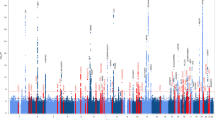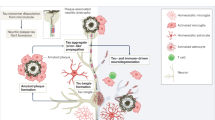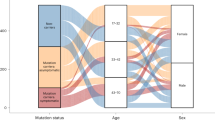Abstract
We conducted an in-depth longitudinal study on an individual carrying the presenilin 2 p.Asn141Ile mutation, traditionally associated with dominantly inherited Alzheimer’s disease (AD), who has remarkably remained asymptomatic past the expected age of clinical onset. This study combines genetic, neuroimaging and biomarker analyses to explore the underpinnings of this resilience. Unlike typical progression in dominantly inherited AD, tau pathology in this case was confined to the occipital region without evidence of spread, potentially explaining the preservation of cognitive functions. Genetic analysis revealed several variants that, although not previously associated with protection against AD, suggest new avenues for understanding disease resistance. Notably, environmental factors such as significant heat exposure and a unique proteomic profile rich in heat shock proteins might indicate adaptive mechanisms contributing to the observed phenotype. This case underscores the complexity of Alzheimer’s pathology and suggests that blocking tau deposition could be a promising target for therapeutic intervention. The study highlights the need for further research to identify and validate the mechanisms that could inhibit or localize tau pathology as a strategy to mitigate or delay the onset of Alzheimer’s dementia.
This is a preview of subscription content, access via your institution
Access options
Access Nature and 54 other Nature Portfolio journals
Get Nature+, our best-value online-access subscription
$32.99 / 30 days
cancel any time
Subscribe to this journal
Receive 12 print issues and online access
$259.00 per year
only $21.58 per issue
Buy this article
- Purchase on SpringerLink
- Instant access to full article PDF
Prices may be subject to local taxes which are calculated during checkout



Similar content being viewed by others
Data availability
Data and study samples (for example, CSF, plasma) supporting the findings of this study are available on request and will follow the policies of the DIAN (https://dian.wustl.edu), which comply with the guidelines established by the Collaboration for Alzheimer’s Prevention. De-identified whole-genome sequencing data will be made available through NIAGADS as part of the DIAN data-sharing process.
Code availability
The codes used in this study, including those applied for segregation analysis, are openly accessible at the following repository: https://github.com/NeuroGenomicsAndInformatics/escapee.
References
Bateman, R. J. et al. Clinical and biomarker changes in dominantly inherited Alzheimer’s disease. N. Engl. J. Med. 367, 795–804 (2012).
Tang, M. et al. Neurological manifestations of autosomal dominant familial Alzheimer’s disease: a comparison of the published literature with the Dominantly Inherited Alzheimer Network observational study (DIAN-OBS). Lancet Neurol. 15, 1317–1325 (2016).
Ryman, D. C. et al. Symptom onset in autosomal dominant Alzheimer disease: a systematic review and meta-analysis. Neurology 83, 253–260 (2014).
McDade, E. et al. Longitudinal cognitive and biomarker changes in dominantly inherited Alzheimer disease. Neurology 91, e1295–e1306 (2018).
Rabinovici, G. D. Dominantly inherited Alzheimer’s disease: a compass for drug development. Nat. Med. https://doi.org/10.1038/s41591-021-01434-2 (2021).
Salloway, S. et al. A trial of gantenerumab or solanezumab in dominantly inherited Alzheimer’s disease. Nat. Med. https://doi.org/10.1038/s41591-021-01369-8 (2021).
Morris, J. C. et al. Developing an international network for Alzheimer research: the Dominantly Inherited Alzheimer Network. Clin. Investig. (Lond.) 2, 975–984 (2012).
Arboleda-Velasquez, J. F. et al. Resistance to autosomal dominant Alzheimer’s disease in an APOE3 Christchurch homozygote: a case report. Nat. Med. 25, 1680–1683 (2019).
Kriebs, A. Genetic protection from early-onset familial Alzheimer’s disease. Nat. Aging 3, 635 (2023).
Lopera, F. et al. Resilience to autosomal dominant Alzheimer’s disease in a Reelin-COLBOS heterozygous man. Nat. Med. 29, 1243–1252 (2023).
Quiroz, Y. T. et al. APOE3 Christchurch heterozygosity and autosomal dominant Alzheimer’s Disease. New Engl. J. Med. 390, 2156–2164 (2024).
Nochlin, D., Bird, T. D., Nemens, E. J., Ball, M. J. & Sumi, S. M. Amyloid angiopathy in a Volga German family with Alzheimer’s disease and a presenilin-2 mutation (N141I). Ann. Neurol. 43, 131–135 (1998).
Bird, T. D. et al. Familial Alzheimer’s disease in American descendants of the Volga Germans: probable genetic founder effect. Ann. Neurol. 23, 25–31 (1988).
Rogaev, E. I. et al. Familial Alzheimer’s disease in kindreds with missense mutations in a gene on chromosome 1 related to the Alzheimer’s disease type 3 gene. Nature 376, 775–778 (1995).
Hsu, S. et al. Systematic validation of variants of unknown significance in APP, PSEN1 and PSEN2. Neurobiol. Dis. 139, 104817 (2020).
Hsu, S. et al. Discovery and validation of autosomal dominant Alzheimer’s disease mutations. Alzheimers Res. Ther. 10, 67 (2018).
Reiswig, G. The Thousand Mile Stare: One Family’s Jouney Through the Struggle and Science of Alzheimer’s (Nicholas Brealey, 2010).
Storandt, M., Balota, D. A., Aschenbrenner, A. J. & Morris, J. C. Clinical and psychological characteristics of initial cohort of the dominantly inherited Alzheimer Network (DIAN). Neuropsychology https://doi.org/10.1037/neu0000030 (2014).
Shirk, S. D. et al. A web-based normative calculator for the uniform data set (UDS) neuropsychological test battery. Alzheimers Res. Ther. 3, 1–9 (2011).
Guerreiro, R. et al. TREM2 variants in Alzheimer’s disease. New Engl. J. Med. 368, 117–127 (2013).
Benitez, B. A. et al. TREM2 is associated with risk of Alzheimer disease in Spanish population. Neurobiol. Aging 34, 1711.e15 (2013).
Sims, R. et al. Rare coding variants in PLCG2, ABI3, and TREM2 implicate microglial-mediated innate immunity in Alzheimer’s disease. Nat. Genet. 49, 1373–1384 (2017).
Song, W. et al. Alzheimer’s disease-associated TREM2 variants exhibit either decreased or increased ligand-dependent activation. Alzheimers Dement. 13, 381–387 (2017).
Poorkaj, P. et al. Tau is a candidate gene for chromosome 17 frontotemporal dementia. Ann. Neurol. 43, 815–825 (1998).
Johnson, E. C. B. et al. Cerebrospinal fluid proteomics define the natural history of autosomal dominant Alzheimer’s disease. Nat. Med. 29, 1979–1988 (2023).
Benzinger, T. L. S. et al. Regional variability of imaging biomarkers in autosomal dominant Alzheimer’s disease. Proc. Natl Acad. Sci. USA 110, E4502–E4509 (2013).
Spillantini, M. G. & Goedert, M. Tau pathology and neurodegeneration. Lancet Neurol. 12, 609–622 (2013).
La Joie, R. et al. Associations between [18F]AV1451 tau PET and CSF measures of tau pathology in a clinical sample. Neurology 90, e282-e290 (2018).
Singleton, E. et al. Heterogeneous distribution of tau pathology in the behavioural variant of Alzheimer’s disease. J. Neurol. Neurosurg. Psychiatry jnnp-2020-325497 (2021).
Jack, C. R. et al. Longitudinal tau PET in ageing and Alzheimer’s disease. Brain 141, 1517–1528 (2018).
Frontzkowski, L. et al. Earlier Alzheimer’s disease onset is associated with tau pathology in brain hub regions and facilitated tau spreading. Nat. Commun. 13, 4899 (2022).
Gordon, B. A. et al. Tau PET in autosomal dominant Alzheimer’s disease: relationship with cognition, dementia and other biomarkers. Brain 142, 1063 (2019).
Brier, M. R. et al. Tau and Aβ imaging, CSF measures, and cognition in Alzheimer’s disease. Sci. Transl. Med. 8, 338ra66 (2016).
Sepulveda-Falla, D. et al. Distinct tau neuropathology and cellular profiles of an APOE3 Christchurch homozygote protected against autosomal dominant Alzheimer’s dementia. Acta Neuropathol. 144, 589–601 (2022).
Mathys, H. et al. Single-cell multiregion dissection of Alzheimer’s disease. Nature 632, 858–868 (2024).
Zipf, G., Chiappa, M., Porter, K. S., Ostchega, Y., Lewis, B. G. & Dostal, J. National health and nutrition examination survey: plan and operations, 1999–2010. Vital Health Stat. 1, 1–37 (2013).
Depristo, M. A. et al. A framework for variation discovery and genotyping using next-generation DNA sequencing data. Nat. Genet. 43, 491–498 (2011).
Bellenguez, C. et al. New insights into the genetic etiology of Alzheimer’s disease and related dementias. Nat. Genet. 54, 412–436 (2022).
McKay, N. S., Gordon, B. A. & Hornbeck, R. C. et al. Positron emission tomography and magnetic resonance imaging methods and datasets within the Dominantly Inherited Alzheimer Network (DIAN). Nat. Neurosci. 26, 1449–1460 (2023).
Su, Y. et al. Partial volume correction in quantitative amyloid imaging. Neuroimage 107, 55–64 (2015).
Barthélemy, N. R. et al. A soluble phosphorylated tau signature links tau, amyloid and the evolution of stages of dominantly inherited Alzheimer’s disease. Nat. Med. 26, 398–407 (2020).
Acknowledgements
We acknowledge the altruism of the participants and their families and contributions of the DIAN research and support staff at each of the participating sites for their contributions to this study. This manuscript has been reviewed by DIAN Study investigators for scientific content and consistency of data interpretation with previous DIAN Study publications. Funding information: Data collection and sharing for this project was supported by the Dominantly Inherited Alzheimer Network (grant no. U19AG032438), funded by the National Institute on Aging (NIA), the Alzheimer’s Association (grant no. SG-20-690363-DIAN), the German Center for Neurodegenerative Diseases (DZNE) and the Raul Carrea Institute for Neurological Research (FLENI). Partial support by Research and Development Grants for Dementia from the Japan Agency for Medical Research and Development, AMED grant no. JP22dk0207049, and the Korea Health Technology R&D Project through the Korea Health Industry Development Institute (KHIDI), Spanish Institute of Health Carlos III (ISCIII), Canadian Institutes of Health Research (CIHR), Canadian Consortium of Neurodegeneration and Aging, Brain Canada Foundation and Fonds de Recherche du Québec—Santé.
Author information
Authors and Affiliations
Consortia
Contributions
J.J.L.-G. and R.J.B. initiated this work, supervised the study and drafted the manuscript. J.J.L.-G., A.J.A., E.M. and W.S. collected and analyzed the clinical and phenotypic data. N.J.-M., B.A.G., T.L.S.B. and D.H. collected and analyzed the imaging data. M.V.F., C.P., M.J., A.E.R., A.M.G. and C.C. contributed to the genetic analyses and data interpretation. S.B., K.C., M.V.F., D.W., C.W. and E.C.B.J. conducted and analyzed the proteomic studies. L.I., N.B., J.J.L.-G. and R.J.B. assisted with molecular and biomarker data collection and analysis. All authors contributed to reviewing the manuscript and refining data analysis. J.J.L.-G. had direct access to and verified the data reported in the manuscript. J.J.L.-G., M.V.F. and N.J.-M. are first authors and contributed equally. C.C., E.C.B.J. and R.J.B. are senior authors and jointly supervised this work.
Corresponding authors
Ethics declarations
Competing interests
The authors declare no competing interests.
Peer review
Peer review information
Nature Medicine thanks Yann Le Guen and the other, anonymous, reviewer(s) for their contribution to the peer review of this work. Primary Handling Editor: Jerome Staal, in collaboration with the Nature Medicine team.
Additional information
Publisher’s note Springer Nature remains neutral with regard to jurisdictional claims in published maps and institutional affiliations.
Supplementary information
Supplementary Information
Appendix 1: Extended Methods, Appendix 2: Extended Results and Supplementary Figs. 1–11 and Tables 1 and 2.
Rights and permissions
Springer Nature or its licensor (e.g. a society or other partner) holds exclusive rights to this article under a publishing agreement with the author(s) or other rightsholder(s); author self-archiving of the accepted manuscript version of this article is solely governed by the terms of such publishing agreement and applicable law.
About this article
Cite this article
Llibre-Guerra, J.J., Fernandez, M.V., Joseph-Mathurin, N. et al. Longitudinal analysis of a dominantly inherited Alzheimer disease mutation carrier protected from dementia. Nat Med 31, 1267–1275 (2025). https://doi.org/10.1038/s41591-025-03494-0
Received:
Accepted:
Published:
Issue date:
DOI: https://doi.org/10.1038/s41591-025-03494-0
This article is cited by
-
Molecular hallmarks of excitatory and inhibitory neuronal resilience to Alzheimer’s disease
Molecular Neurodegeneration (2025)
-
Exploring factors that confer cognitive resilience
Nature Reviews Neurology (2025)
-
A man was destined for early Alzheimer’s — these genes might explain his escape
Nature (2025)



